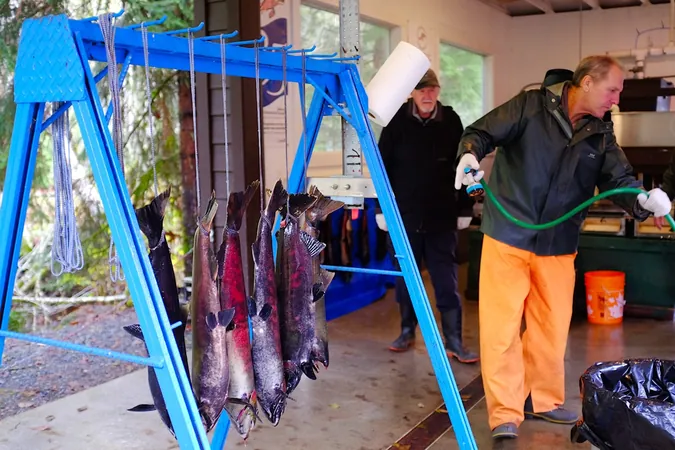
From Troubled Waters to Triumph: The Inspiring Journey of Langford’s Goldstream Hatchery
2024-12-22
Author: Michael
In an inspiring tale of determination and community effort, the Goldstream ‘Howard English’ Hatchery in Langford has transformed from a humble one-man project into a robust salmon enhancement program, breathing life back into the struggling salmon populations of the Goldstream River.
The Salmon Harvesting Process
Every fall, from early September to late November, volunteers venture into the Goldstream River with traps set in advance. Waders on and nets in hand, they collect spawning-ready salmon while ensuring the protection of those not yet prepared to spawn. The fish are then brought back to the hatchery for careful sorting and triaging.
Fertilization: The Heart of the Hatchery
In a gripping process involving over 30 to 60 salmon each day during peak spawning, volunteers employ skilled methods to harvest eggs and milt. Females are opened with precision to extract their vibrant eggs, while male salmon are carefully milked for their sperm. This meticulous choreographers' work leads to fertilization, which combines the precious roe and milt along with water to ensure successful development.
Not just a facility, this hatchery also acts as a vital ecological player; fish carcasses from the process are frozen and later placed back into the Greater Victoria forest to nourish the environment, completing a vital nutrient cycle.
Incubation - Nurturing New Life
The fertilized eggs are placed in trays designed to mimic natural river beds, known as redds. The hatchery's dedicated team monitors these trays, removing any unfertilized eggs. The coho salmon hatch in about seven weeks, while chum take up to four months. Initially, the tiny alevins rely on their yolk sac; as they grow, they transition to the fry stage and venture into the wild.
Preparing for Release: The Future of Salmon
As the alevins develop, coho salmon make a swift move to open waters, whereas chum salmon spend longer in freshwater to mature. The hatchery mimics these natural conditions before clipping the small fatty adipose fin of hatchery-raised fish to mark them distinctly.
Despite facing challenges like last year’s record-low returns, the hatchery has seen a resurgence with projections estimating the collection of up to a quarter of a million eggs this year. As the hatchery approaches its best returns in two decades, there’s renewed hope for the salmon’s future.
A Beacon of Hope and Community Spirit
The story of the Goldstream Hatchery is more than just about fish; it’s about community resilience, environmental stewardship, and the fight to preserve nature's splendor. Volunteers are eagerly looking forward to the return of the salmon in three to five years, a testament to their hard work paying off – and perhaps sparking a renaissance for both salmon and the Goldstream ecosystem.
Stay tuned as we follow this remarkable journey, highlighting how committed individuals can reclaim the future for endangered species, one hatchery at a time!









 Brasil (PT)
Brasil (PT)
 Canada (EN)
Canada (EN)
 Chile (ES)
Chile (ES)
 España (ES)
España (ES)
 France (FR)
France (FR)
 Hong Kong (EN)
Hong Kong (EN)
 Italia (IT)
Italia (IT)
 日本 (JA)
日本 (JA)
 Magyarország (HU)
Magyarország (HU)
 Norge (NO)
Norge (NO)
 Polska (PL)
Polska (PL)
 Schweiz (DE)
Schweiz (DE)
 Singapore (EN)
Singapore (EN)
 Sverige (SV)
Sverige (SV)
 Suomi (FI)
Suomi (FI)
 Türkiye (TR)
Türkiye (TR)